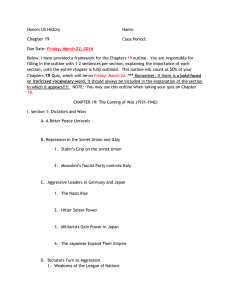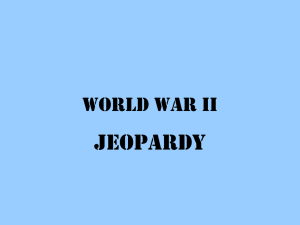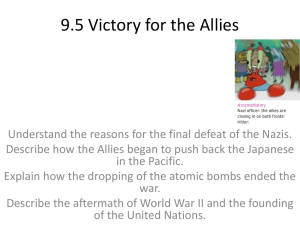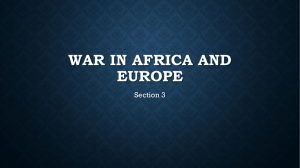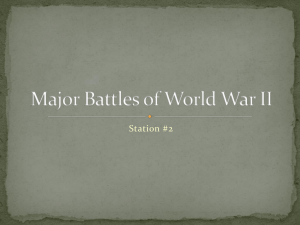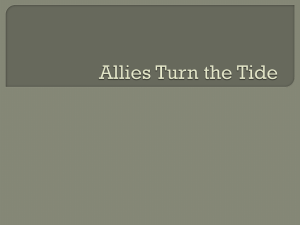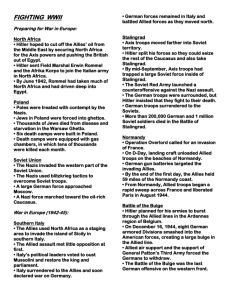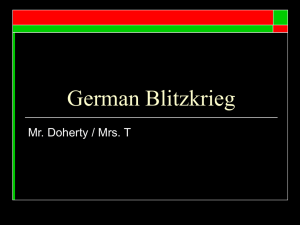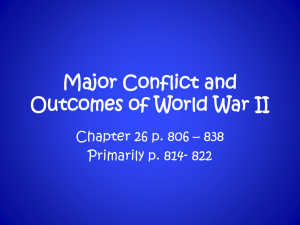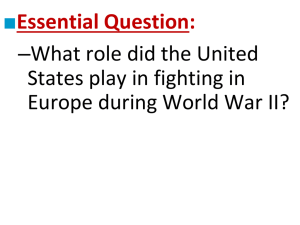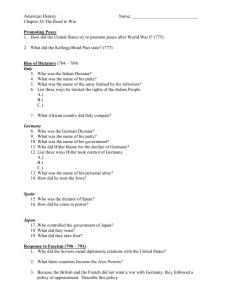WWII: Notes
advertisement
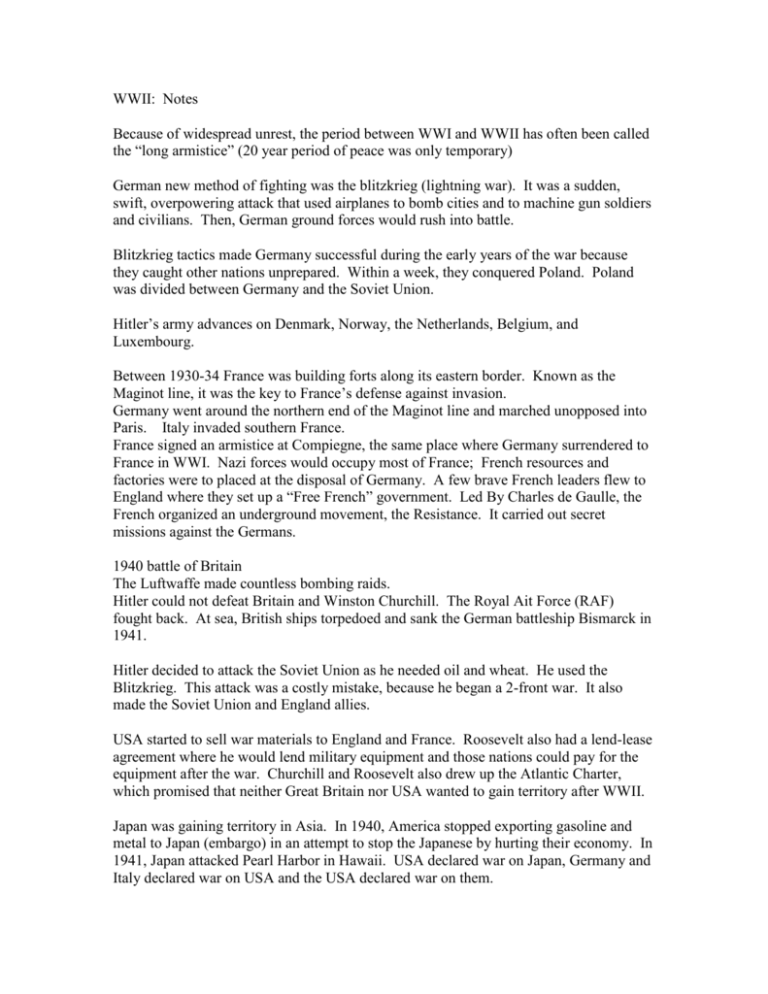
WWII: Notes Because of widespread unrest, the period between WWI and WWII has often been called the “long armistice” (20 year period of peace was only temporary) German new method of fighting was the blitzkrieg (lightning war). It was a sudden, swift, overpowering attack that used airplanes to bomb cities and to machine gun soldiers and civilians. Then, German ground forces would rush into battle. Blitzkrieg tactics made Germany successful during the early years of the war because they caught other nations unprepared. Within a week, they conquered Poland. Poland was divided between Germany and the Soviet Union. Hitler’s army advances on Denmark, Norway, the Netherlands, Belgium, and Luxembourg. Between 1930-34 France was building forts along its eastern border. Known as the Maginot line, it was the key to France’s defense against invasion. Germany went around the northern end of the Maginot line and marched unopposed into Paris. Italy invaded southern France. France signed an armistice at Compiegne, the same place where Germany surrendered to France in WWI. Nazi forces would occupy most of France; French resources and factories were to placed at the disposal of Germany. A few brave French leaders flew to England where they set up a “Free French” government. Led By Charles de Gaulle, the French organized an underground movement, the Resistance. It carried out secret missions against the Germans. 1940 battle of Britain The Luftwaffe made countless bombing raids. Hitler could not defeat Britain and Winston Churchill. The Royal Ait Force (RAF) fought back. At sea, British ships torpedoed and sank the German battleship Bismarck in 1941. Hitler decided to attack the Soviet Union as he needed oil and wheat. He used the Blitzkrieg. This attack was a costly mistake, because he began a 2-front war. It also made the Soviet Union and England allies. USA started to sell war materials to England and France. Roosevelt also had a lend-lease agreement where he would lend military equipment and those nations could pay for the equipment after the war. Churchill and Roosevelt also drew up the Atlantic Charter, which promised that neither Great Britain nor USA wanted to gain territory after WWII. Japan was gaining territory in Asia. In 1940, America stopped exporting gasoline and metal to Japan (embargo) in an attempt to stop the Japanese by hurting their economy. In 1941, Japan attacked Pearl Harbor in Hawaii. USA declared war on Japan, Germany and Italy declared war on USA and the USA declared war on them. 4 main theatres of war = Europe, North Africa, Asia and the Pacific Islands. Axis Victories Japan = Guam, Wake Islands, Hong Kong, British Malaya, the Philippines and the Dutch East Indies Nazis had advanced as far as Stalingrad (Soviet Union). In North Africa Germany reached Egypt and threatened the Suez Canal and the British naval base at Alexandria. Allies’ Turning Point 1942 Pacific American flyers led a surprise attack on Tokyo Battle of Coral Sea = stopped the Japanese threat of invasion of Australia Midway Island = Japanese were defeated North Africa and Europe Germany was driven out of Egypt and eventually out of Africa. Allies invaded Sicily Soviet Armies, aided by a bitterly cold winter, made a heroic stand at Stalingrad and stopped the Nazi advance. Allied planes made a series of round-the-clock raids on German factories. The German people realized how terrible was could be and what Hitler caused. D-Day 1944, British, American and Canadian and free French troops invaded the French region of Normandy. General Eisenhower was the commander. Allies began the offensive that took them across France to Germany and final victory. 1944 Allied soldiers liberated Paris Germans made their last counter-offensive in Belgium in Dec. 1944. This was known as the Battle of the Bulge. 76,000men killed. The Allied forces won and moved into Germany. The War Ended in Europe and in Asia War ended in 1945 Roosevelt died suddenly, Mussolini was shot by anti-Fascists and Hitler passed his last days hidden in a bombproof shelter. He killed himself when the Soviet army entered Berlin. Fighting ended in Italy on the same day. May 8th 1945 victory in Europe was proclaimed (known as V-E Day) Japanese defeat was near. Philippines and island of Okinawa were captured. The Atomic bomb was used on Hiroshima and Nagasaki. The next day, Japanese surrendered. Sept. 2, 1945 the Japanese signed the agreement which ended the war. Allied Leaders Made Plans for Peace: Big Three = Winston Churchill, Franklin D. Roosevelt, and Joseph Stalin. United Nations was formed. Free elections would be held in Eastern European countries Poland was to given German land in exchange for Polish land to be taken in the east by Russia. Germany was divided into American, British, French, and Soviet military zones. Trials of Nazi war criminals were to take place July 1945, the Allied leaders met in Potsdam, Germany where they agreed on a peace settlement with Germany and drew up plans for Japan’s surrender and occupation.

